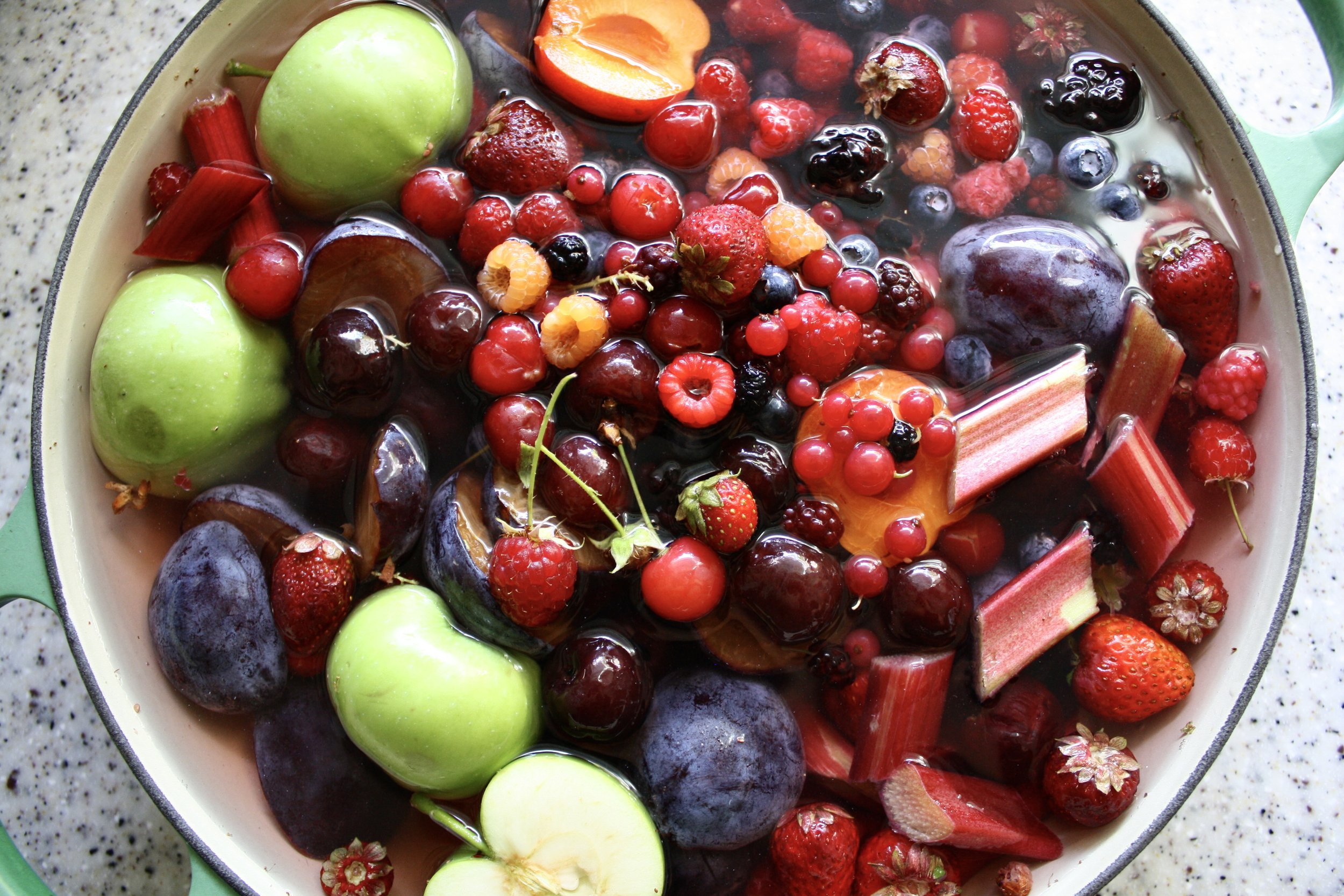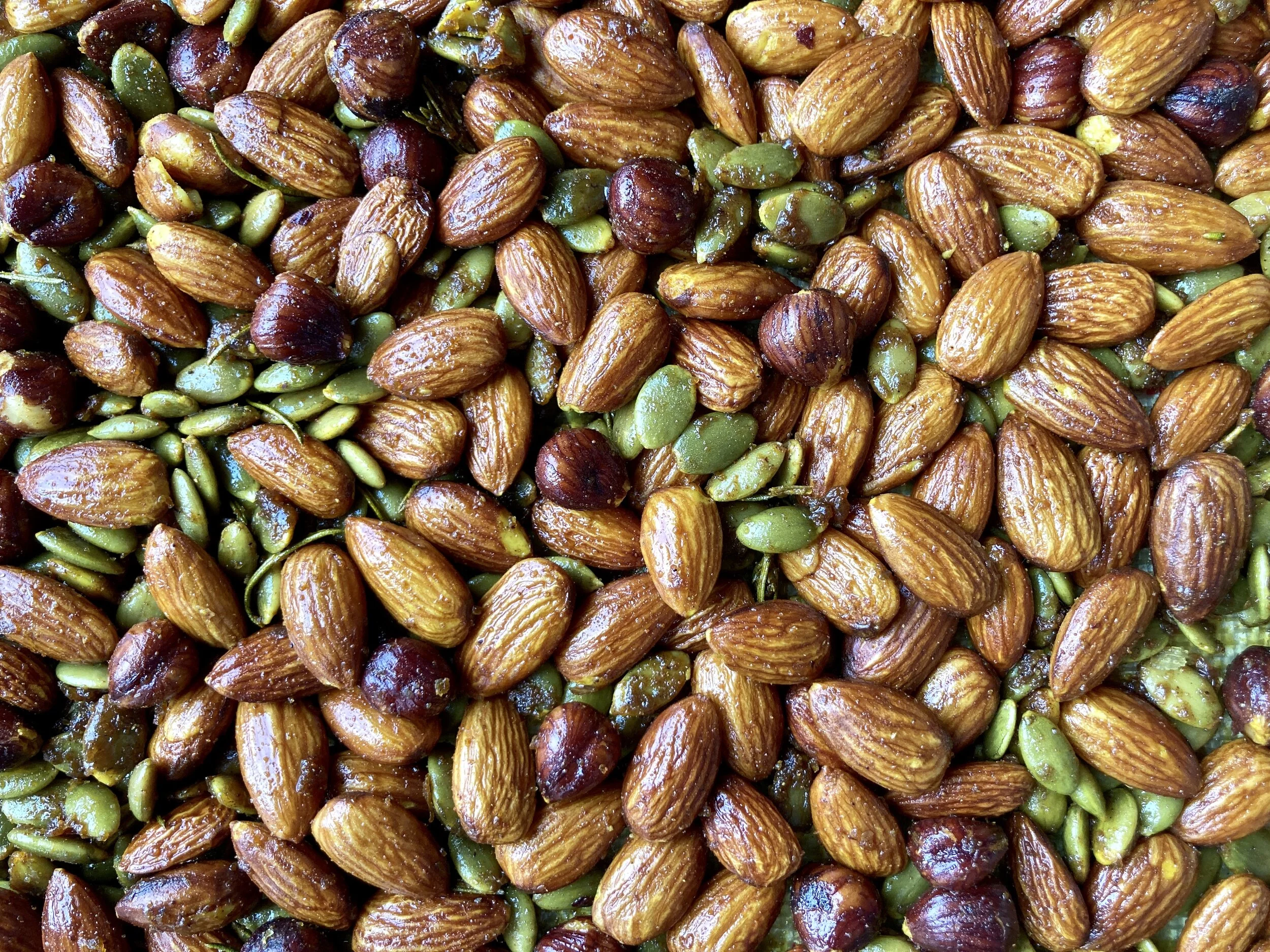My grandmother would always make a vibrant, fragrant, ice-cold kompot (compote) in the dog days of summer, often with fruit my family had foraged or harvested in the Pacific Northwest. Kompot is essentially stewed fruit that can be strained and enjoyed as a beverage, or it can be ladled into deep mugs and served like a fruit soup. Rich with berries and stone fruit, the deep purple liquid would cool us down as the temperature climbed.
Kompot is very popular in Ukraine, where my family comes from, and across the former Soviet Union and Eastern Europe. Each home has its own recipe, and it can be made with fresh or even dried fruit. Keeping with tradition, I often squirrel away foraged fruit in the freezer; preserving berries and stone fruit from throughout the season waiting for the right time to make this family recipe. Inevitably, an August heat wave will arrive, and that’s when I take out my grandmother’s big enamel pot and fill it with all that saved fruit. The house will slowly fill with the smell of simmering fruit, and I’ll eagerly wait for the satisfaction of sipping on chilled kompot.
This recipe is very simple and endlessly modifiable and can be made year-round from fresh or frozen fruit.
Ukrainian Summer Fruit Kompot (Compote)
Serves 6-8
Ingredients
1½ lbs, mixed berries, fresh or frozen (raspberries, blackberries, currants, strawberries, etc.)1 lb mixed stone fruit, fresh or frozen (cherries, plums, peaches)
2-3 small apples, cored and halved
1 cup sugar or honey, or to taste
8 cups of water
Juice of 1 lemon, optional
Directions:
Clean off the fruit and remove any stems.
Add the fruit, sugar, and water to a large pot.
Bring the liquid up to a boil, then lower the heat and gently simmer for 10 minutes; you want the fruit to release its juices but still hold its shape.
Taste and add more sugar or honey if you like it sweeter. If adding extra sweetener, let it simmer for another 2-3 minutes to let the sugar dissolve. Add lemon juice if desired for a more tart flavor.
Allow the kompot to cool then transfer it to the fridge to fully chill before serving.
If you prefer a strained kompot, use a mesh strainer, and transfer the kompot into a pitcher to serve cold. If you prefer the kompot with the fruit still in it, serve it ladled into deep cups or bowls with a spoon.


















